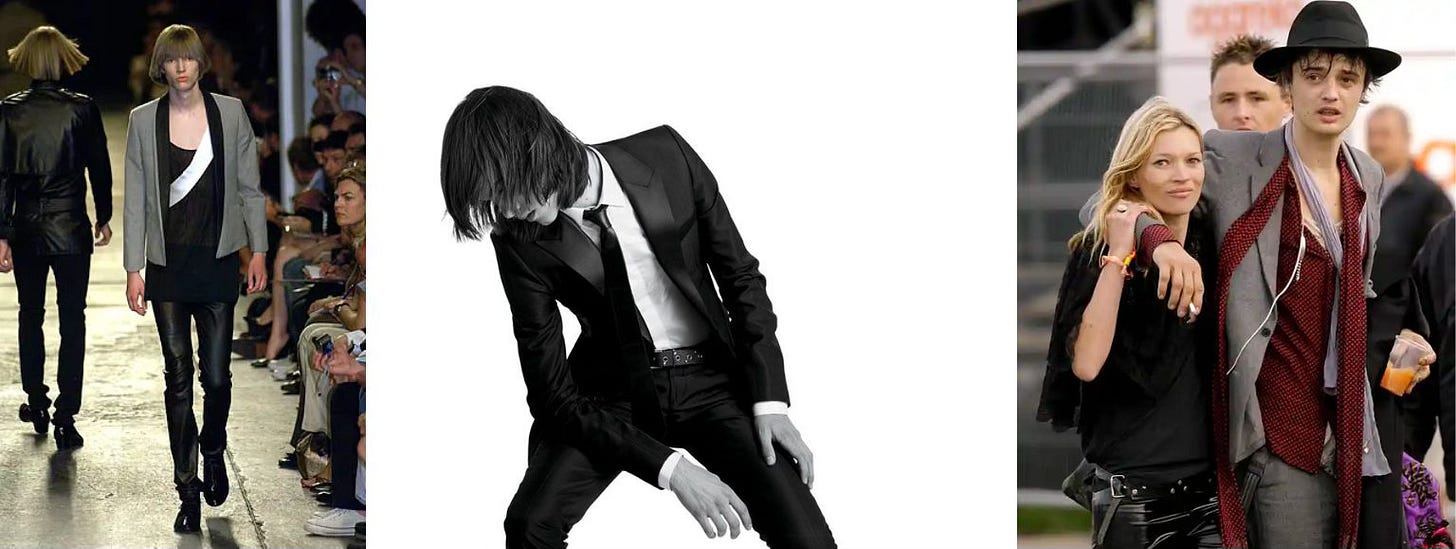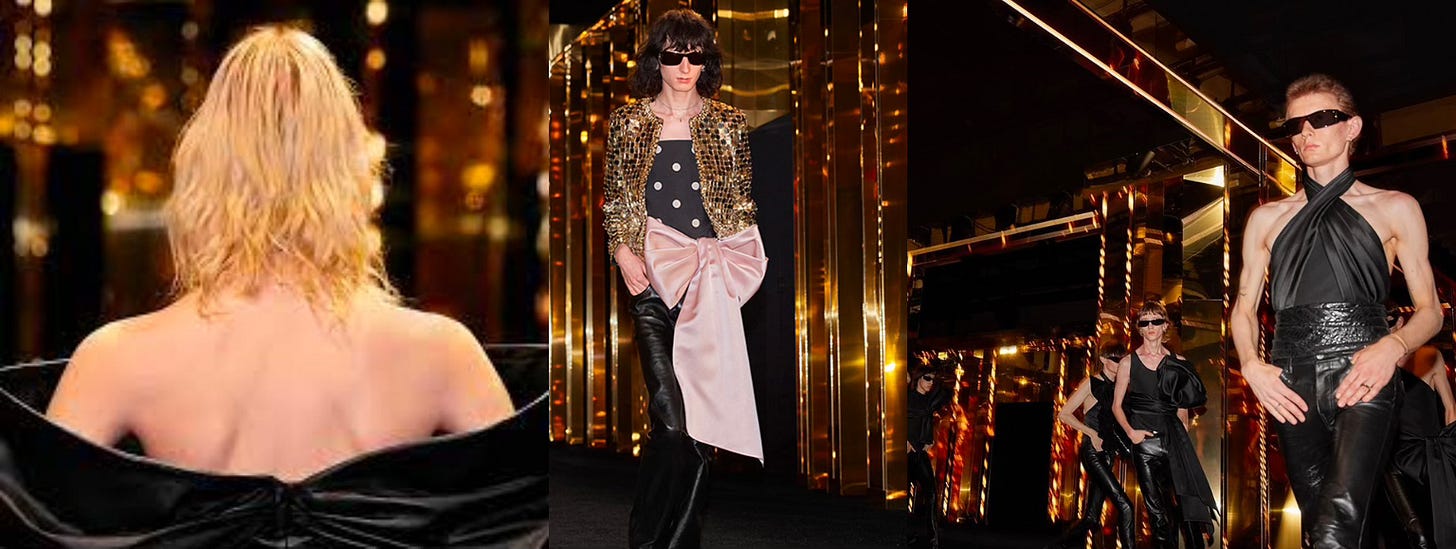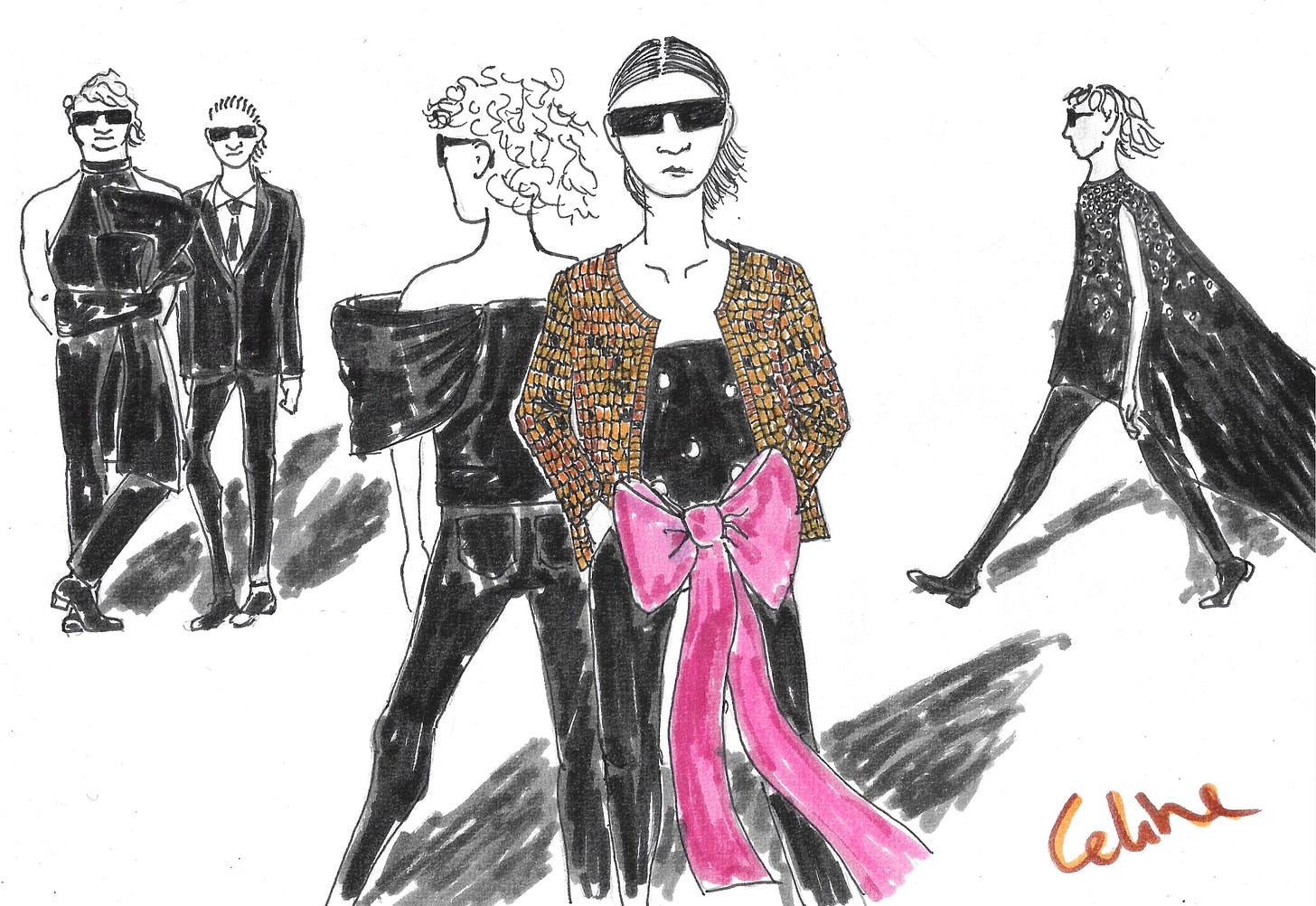It has happened. I wasn’t prepared or even formally warned, but there is no denying possible: for the first time, an aesthetic and the music from my past have come back as a trend. I don’t think we really had a name for what we wore and listened to back in then, but youths these day (👴) call it Indie Sleaze. It’s all flannel shirts, cigarettes and being unironically ironic. I’ve been told gen-z is thrifting for our skinny jeans already. We just donated those!
One of the masterminds behind the original Indie Sleaze look, Hedi Slimane, is a captain for the resurgence as well. His latest Celine collection made me think of all this. Back in the day he did it at Dior Homme, where he dressed pretty much everybody my little gang looked up to: Pete Doherty, Kate Moss, The Strokes and Razorlight. He is mentioned as a connaisseur in Meet Me in the Bathroom, a great book composed of interviews with the scene about the scene, by journalist Lizzy Goodman.
Slimane’s work was revolutionary in setting a new standard for menswear in the early 2000s. Out were machos with big suits in muted colours or Versace’s extravagant himbos, in came the androgynous rocker in skinny jeans, tight tailoring and a nostalgia for the seventies and eighties. As Jay McCauley Bowstead explains in Menswear Revolution this coincided with the emergence of the New York music scene and its subculture denoted quickly as ‘indie’ or ‘hipster’.
Almost overnight, the athletic, suntanned jock wasn’t in fashion anymore. The awkward, fragile and skinny-legged boy we knew from bands and our nightlife scene became the role model du jour. This was also evident in the street-casted models Slimane preferred for his shows: pale, long-haired and very, very skinny1. Having both a high fashion idol and a social group that appreciated this look was liberating to me and made me more and more comfortable with expressing myself with clothes.
Of course not everybody was on board right away. The backlash this image of men received, shows how revolutionary it was. McCauley Bowstead mentions the hate hipsters encountered back in the day. Websites like Hackney Hipster Hate and Look at This Fucking Hipster mocked their effeminate ways and openly threatened them with violence. “Hipster” became an insult. What we think of now when we think of a male hipster is not the emo kid or indie rocker, but the workwear clad, furniture making home brewer. McCauley Bowstead explains that this more ‘authentic’ and traditional masculine version of the hipster that came later is at least partially a result of that criticism.
Even for people that never heard of Slimane, Dior or the people he dressed, it was difficult to avoid the slim jeans, low necklines and snug jackets. And that’s why I find Slimane’s return to Indie Sleaze so interesting. He has been working on it for a while. Last year he presented a collection simply called “Indie Sleaze” and his latest menswear collection for spring/summer 2024 saw him returning to his roots even more. Back at Dior, he did die-hard fashion. Yes, it influenced high-street retailers and our daily uniforms, but most of it was still to out there to be worn in daily life. It was his photography that directly mirrored what he saw at concerts in New York and Londen. At Saint Laurent his feeling for the zeitgeist was more direct, but in my opinion what he did there was more styling or storytelling than designing. At Celine, he is designing again. The most exciting parts are where he was inspired by Pierre Mignard’s baroque portraits, and softened the angular rockers with balloon sleeves, huge pink bows around the waist and shameless gold sequins.
You can see an evolution here. What Slimane did almost 20 years ago was met with enthusiasm or even relief for some men. For others, it was the most ridiculous thing they could think of. If the second time around he would rehash what he did without a modern vision, it would not have the same effect. That’s the joke of fashion: what some men found too frivolous, feminine and gay to put on 20 years ago, is now their go-to wardrobe. Think of beacons of style (ahem) like Elon Musk and Jordan Peterson: it’s all skintight jeans with cropped suit jackets.
I loved that Slimane seems aware of this cycle because, as a huge music nerd, his soundtrack can’t be a surprise. He played LCD Soundsystem’s Losing My Edge. That’s a track from 2002, where he normally prefers brand-new or even unreleased songs for his show. This song is described as somewhat of an anthem of the upcoming music scene of the early 2000s in the aforementioned Meet me in the bathroom. More importantly, the lyrics are a lamentation of someone that was in the centre of scene, but feels he is caught up by a new generation:
But I'm losing my edge to better-looking people with better ideas and more talent.
And they're actually really, really nice.
Same girl, same.
Hedi Slimane is known for his very rigid casting. It was worse back at Dior and even later at Saint Laurent, where he only chose white, young and very skinny boys. Now he seems a bit more open to non-white models, but nothing has changed in terms of age and body-type. That’s why I included a fuller boy in a sketch to show how it can look good on everybody.








